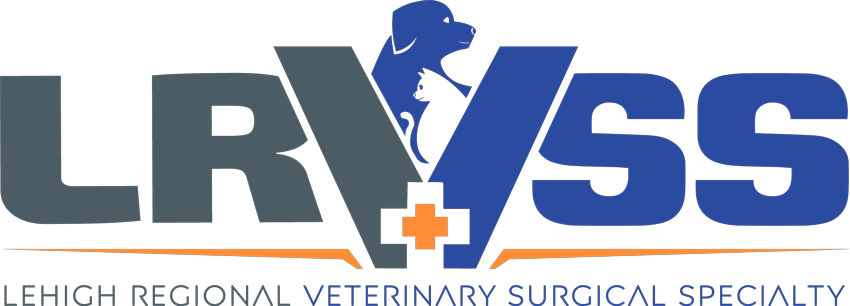Whether to move forward with a big procedure for your cat or your dog can be a very difficult decision for any pet lover.
It’s totally understandable. After all, you’re responsible for another life, and you need to make sure you make the correct choice.
Of course, there are a million different situations, so let’s choose my specialty – surgery – to simplify things.
If your pet needs another procedure (dentistry, chemo, an MRI), the reasoning should be pretty similar.
Here is a 5-step process that might help you make the best possible decision.
1. CLARIFY
The first step is to clarify what’s going on.
. What is your pet’s diagnosis?
Most the time, the diagnosis is a certainty.
Occasionally, it is not, there are a few different options, so we may need more diagnostic tests to clarify things.
. What is the proposed treatment?
Is there only 1 option? For example, if your dog swallowed a tennis ball, there is only 1 good option: surgery to open the stomach and remove the ball.
Or are there several options? Do you clearly understand what they are?
. What is the likely outcome?
The outcome, also called prognosis, can go from excellent to terrible.
Make sure you understand how well your pet should do after surgery.
If you are not 100% clear on any of the above, it is your absolute right to ask questions until you understand the whole situation.
2. COLLECT
Your next step is to get more information about the whole process.
. What are your responsibilities?
What are things you should do before and after surgery?
Will you need to prepare anything at home before your pet’s return?
Will your pet need physical therapy?
Which medications will you need to give?
. What is your time commitment?
When will you have to go back to your vet or your surgeon (suture removal? X-rays? Follow ups)?
How much time will you have to dedicate to improve your pet’s recovery?
Will you need help to take care of your pet?
Examples include physical therapy, walking outside, giving medications etc. Some of these tasks may not be a big deal in a 5 pound Yorkie.
Yet they could be a big ordeal in a 150 pound Mastiff.
. What is your financial commitment?
How much will the procedure cost?
Did you receive a clear estimation of the fees?
What is included?
What is not included, such as follow up visits?
What are the payment options?

3. COMPARE
With this information in hand, you should ask (yourself or your family vet):
. Who should be providing the treatment?
Can your family vet do it?
Or should you seek the help of a specialist, i.e. a board-certified surgeon?
What are the pros and cons of having your family vet do surgery, vs. a surgeon?
How common/delicate/difficult/risky is the surgery?
How much experience does it require?
. How many times has your vet (or surgeon) performed the surgery?
It can be an awkward conversation, but you have a right to ask the question, and you should get an honest answer.
It seems logical that someone who does the surgery several times each week will have more experience – and likely a better outcome – than someone who does it once a month or once a year.
. Who will provide the safest anesthesia?
Surgery means general anesthesia.
As the saying goes, “there are routine surgeries, but there is no routine anesthesia.”
So you should not only ask questions about the surgery.
You should also ask questions about anesthesia.
How safe is it?
Who will be performing it?
How is your pet monitored?
How is your pet kept warm before, during and after surgery?
How is pain management handled?
4. COMPLICATIONS
There is NO surgery without possible complications.
So you should feel free to ask questions, no matter how uncomfortable they may seem.
. What are the known complications of this surgery?
Some complications are common, some are rare. Some are mild, some are catastrophic. Some are preventable, some are freak accidents. Some are repairable, some are not.
So, what complications should you know about after your particular pet’s surgery?
. What complications have YOU encountered in your practice?
This is a fair, yet delicate question.
Remember, you have a right to ask because you need to act as your pet’s best advocate.
. Is someone else likely to have fewer complications?
With all due respect, it would make sense that a surgeon who does a surgery regularly, should have fewer complications than a family vet who does it rarely.

5. COMMIT
You’ve done your homework.
You Clarified and you understand what needs to be done.
You Collected the information you needed so you understand your commitments.
You Compared alternatives that meet the requirements.
You understand the possible Complications after surgery.
Now it’s time to Commit.
If you want to help your pet, what is your decision going to be?
What surgery is needed?
Why is it needed?
Who is going to perform it?
When is it going to happen?
Where is it going to happen?
Now it’s time to Commit to 3 things:
. Commit to the financial part
Unless you have pet insurance (I should probably say “even if” you have pet insurance), you will need to decide the best payment option for you.
Once this is arranged, you can move on to the next step: picking a date.
. Schedule the surgery ASAP
Delaying surgery is almost never going to help your pet.
If your pet needs ACL surgery, waiting around will cause more pain, more muscle loss and more arthritis.
If your pet needs a mass removed, waiting around will allow it to grow bigger, and will make the surgery more invasive and potentially less successful.
If your pet needs a broken bone repair, it’s easy to understand that waiting around will make the surgery more difficult… if not impossible.
. Commit to doing your part
Your vet or your surgeon and their team did their part.
Now you need to do yours.
Please follow your discharge instructions.
They were not designed to annoy you or torture your pet – we promise !!!
They were written with love, to help you get your pet as close to normal as possible.
They were refined over time, based on experience, with previous patients.
There were shared with you with ONE goal in mind: ensure success.
So please take them seriously.
I hope you admire how much self-control I have displayed until now…
But now I can’t keep it in anymore…
So here we go: be careful where you’re getting information from.
Be very selective with Dr. Google. It will show the absolute worst and the absolute best information. Why?
Because anybody with a keyboard can anonymously share their opinion, no matter how ridiculous it is.
Generally speaking, you should be able to trust info found on the websites of vet schools, specialty practices and family vets.
However, some chat rooms, message boards and open forums can be full of non-sense (one notable exception is some of the Yahoo groups, and even then, anybody can write anything they want).
Free advice is sometimes not worth much…
Ultimately, your best source of information is a family vet or a surgeon you trust.
They (hopefully) don’t have an opinion based on dogma or a personal agenda or a one-off crazy story.
They should have information forged over years of education, experience and practice.
That is what you pay for.
It is no different than with a physician, a nurse, a dentist, an architect or an airplane pilot.
Good luck with your pet’s surgery and recovery.
If you would like to learn how we can help your pet with safe surgery and anesthesia, please contact us through www.LRVSS.com
Never miss a blog by subscribing here: www.LRVSS.com/blog
Phil Zeltzman, DVM, DACVS, CVJ, Fear Free Certified
